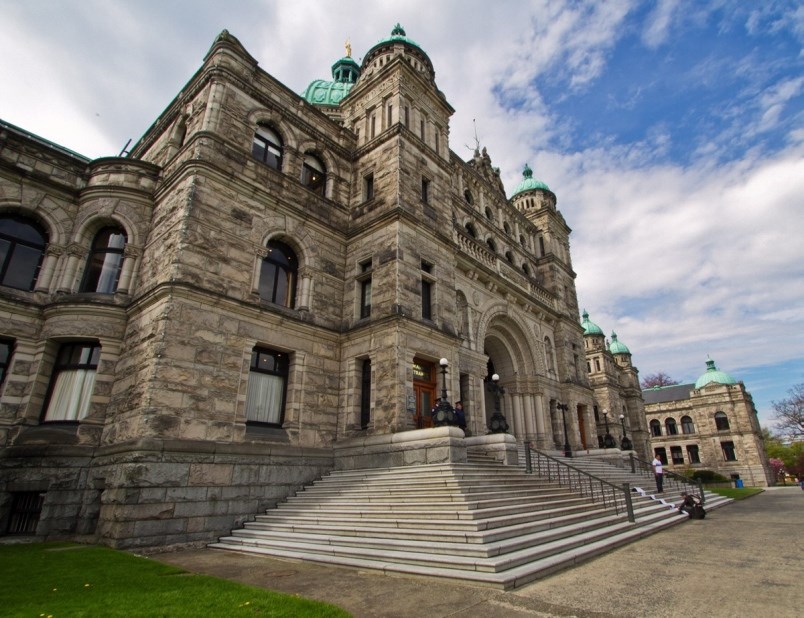A seeks to define “reasonably available” alternative shelter when municipalities go to court to enforce bylaws against homeless encampments. If passed, will undermine the charter rights of some of the most vulnerable members of Canadian society.
The bill is short and cryptic. It says that, if a local government goes to court for an injunction to enforce its bylaws against someone sheltering in a homeless encampment, alternative shelter is “reasonably available” and meets the person’s basic shelter needs if the person may stay there overnight, they have access to a bathroom and shower at or near the shelter, they are offered one free meal a day at or near the shelter and the shelter is staffed when in use.
Beyond leaving key terms like “homeless,” “encampment” and “near” undefined, the bill simply asserts that shelter spaces are reasonable options if they meet this bare-bones description, regardless of whether they are actually accessible to tent city residents.
This would overturn a series of court decisions that insist shelter must be practically accessible to the individuals the government wants to evict from encampments.
A punitive approach
In Greater Vancouver alone, are homeless, sleeping in shelters, cars or outdoors. That is up a staggering 32 per cent since 2020.
Encampments are a visible sign of this crisis. Yet, despite an overwhelming lack of affordable housing, .
Courts have established that prohibiting unhoused people who lack adequate alternatives from sheltering overnight on public land to life and security of the person. Yet Canadian municipalities have gone to court repeatedly seeking injunctions to evict encampments from public land.
In , we show that courts have been remarkably eager to grant municipalities injunctions even though they are supposed to be drastic remedies for extraordinary situations.
But the tide is shifting. Courts across the country have increasingly begun to doubt and even that overcrowded and unsafe shelters actually of unhoused people.
Evicting unhoused people from their homes, however makeshift, is a . But instead of taking a to homelessness, the B.C. government’s new bill makes it even easier to evict already vulnerable people.
Practical barriers to shelter
The bill’s definition of “reasonably available” alternative shelter might seem to give encampment residents some protection against arbitrary eviction. But it actually weakens existing legal protections by ignoring the barriers that make many shelters inaccessible, the distinct situation of Indigenous people and the need for shelter and storage during the day.
Violence, theft, mold, vermin and lack of privacy make some shelter options inaccessible to many unhoused people. Inaccessibility is particularly stark for .
Strict limits on how many belongings people can bring into shelters also present an impossible choice between . Bans on pets and couples are barriers for some. Curfews and abstinence rules limit accessibility for people dealing with substance use and addiction.
Many unhoused people, including those with mental health challenges, are ejected under “one strike you’re out” policies. Limits on shelter stays are another barrier. On top of it all, housing waitlist processes are confusing and frustrating.
These barriers are well known to everyone concerned with homelessness, including the B.C. government. Courts say when deciding whether to issue injunctions against encampments.
By ignoring them, the bill perpetuates a false stereotype of unhoused people as “choosy beggars” who deliberately refuse adequate shelter. This bill ignores the fact that people experiencing homelessness know best what shelter is safe and adequate for them.
Indigenous people overrepresented
Indigenous people are massively overrepresented in the unhoused population. They comprise just two per cent of Greater Vancouver’s population, . Many have been profoundly affected by residential schools, colonial dispossession and anti-Indigenous racism. Existing shelter options reproduce these traumas.
Courts have this context must be considered when determining whether shelter alternatives are adequate and accessible. Yet B.C.’s bill entirely ignores it, violating the province’s obligations to consult Indigenous Peoples on decisions that affect them and pass laws that comply with the .
The need for daytime shelter
Finally, the claim that having somewhere to spend the night meets a person’s basic needs for shelter is simply untrue. Having somewhere to shelter and store belongings during the day is a basic need that , and have begun to acknowledge as a .
To deny unhoused people the ability to shelter throughout the day is to condemn them, in , to “constant disruption and a perpetuation of a relentless series of daily moves to the streets, doorways, and parks” of Canadian cities.
, packing up their homes, carrying all their belongings around all day — including tents, sleeping bags, clothing, toiletries and medicine — and lining up for somewhere to sleep every night is a hardship for all unhoused people and impossible for many.
Like B.C.’s , Bill 45 is aimed at excluding poor people from public spaces. Instead of addressing the province’s lack of housing and income inequality, the B.C. government is making it easier for municipalities to police poor and unhoused people.
This bill attempts to roll back existing charter protections and limit courts’ discretion regarding injunctions against encampments. It will be deeply harmful to unhoused people if enacted.
As the B.C. legislature debates this bill, we need to send elected representatives a clear message: stop trying to justify the punishment, stigmatization and eviction of unhoused people and start to work seriously to .
Stepan Wood has conducted pro bono legal research and served as an expert witness at the request of lawyers representing residents of homeless encampments.
Alexandra Flynn receives funding from the Social Sciences and Humanities Research Council and the Canada Mortgage and Housing Corporation.
Estair Van Wagner receives funding from the Social Sciences and Humanities Research Council and the Office of the Federal Housing Advocate.



